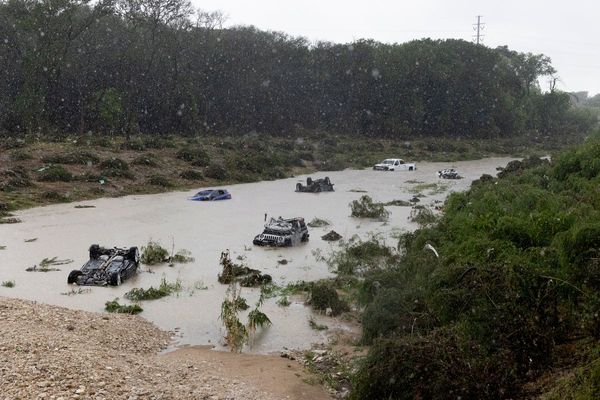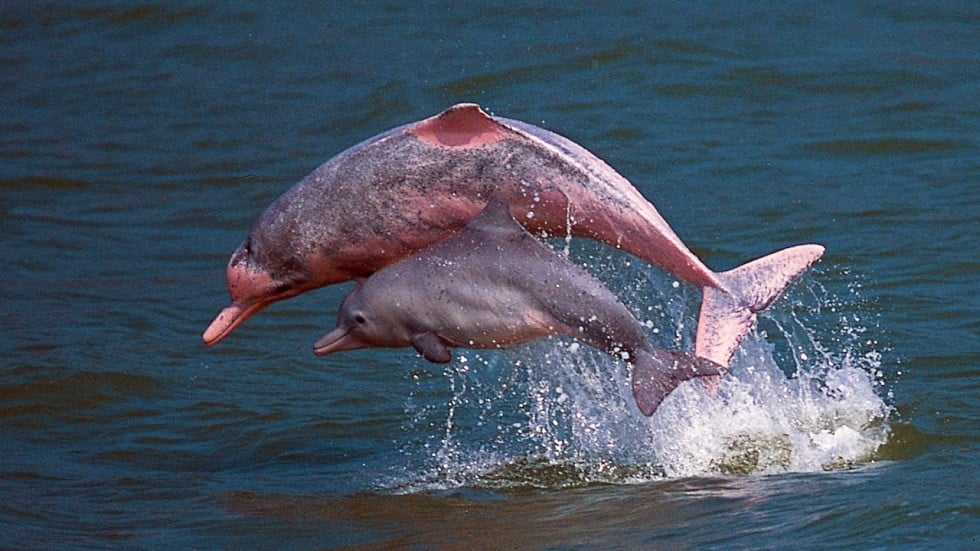
Her backpack weighed down with books, Audrey Tam looks like a typical teenager as she makes her way to the end of Pier 10 on Hong Kong’s Central waterfront. But while other students are immersed in studies and extracurricular activities, 16-year-old Tam – who was born in Canada and moved with her family to Hong Kong when she was four – is on a mission to help save the city’s rare Chinese white dolphins.
“When I heard how many white dolphins were left it really shocked me. It’s below 50; it’s tragic,” says Audrey, a Year 10 student at Canadian International School.

According to the latest annual dolphin monitoring report published by the Agriculture, Fisheries and Conservation Department, only 47 Chinese white dolphins remain in waters around Hong Kong’s Lantau Island, at the mouth of the Pearl River Delta, a drop of 27 per cent compared to data in 2016. It’s the lowest figure for the creature – also called the pink dolphin – since compilation of population records began in 2003.
11 green groups slam task force chief for downplaying environmental impact of land reclamation
Habitat destruction from coastal reclamation and busy marine traffic are the top two threats affecting their numbers, distribution and behaviour.
The depressing figures come during a particularly bad year so far for Hong Kong’s marine mammals, including the white dolphin that was made a symbol of the city’s handover from Britain to China in 1997.
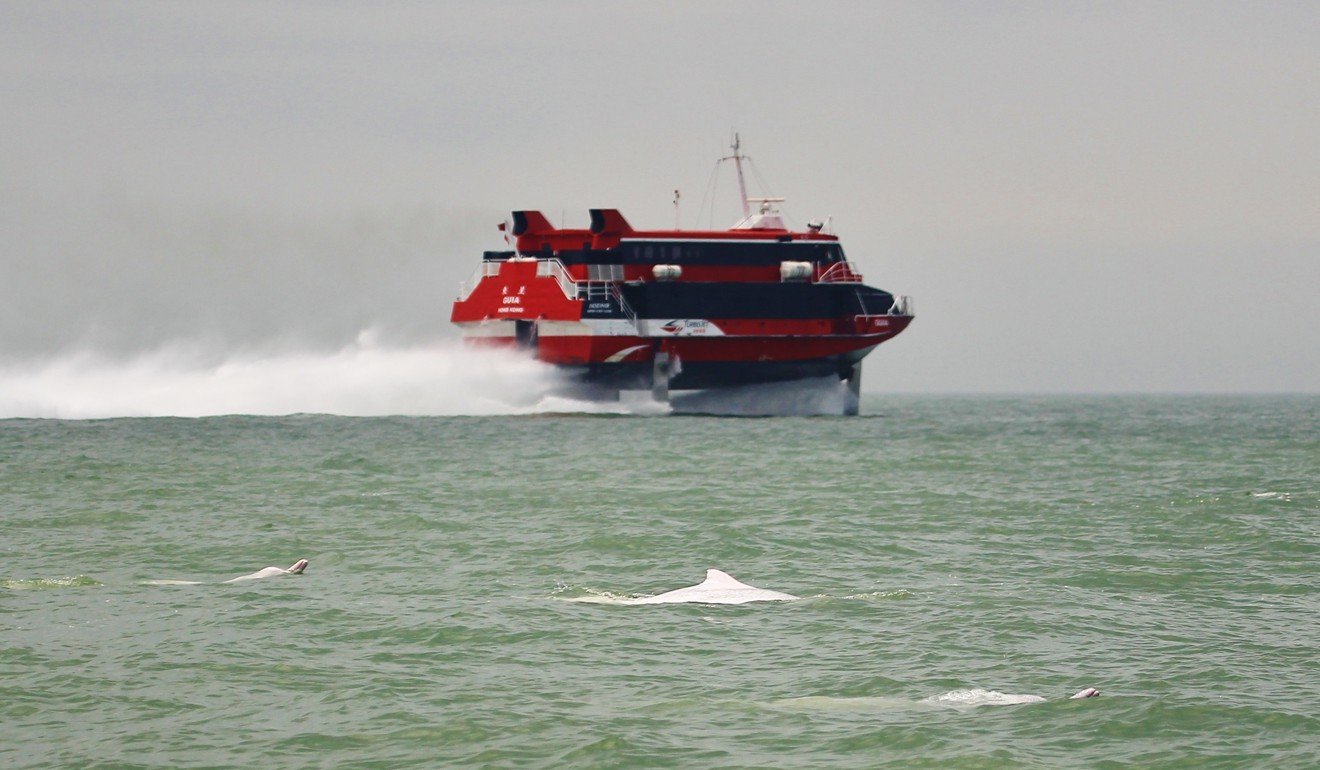
During the Chinese New Year weekend (February 16 to 18) this year, five bodies – four finless porpoises and a Chinese white dolphin – were found. The bodies were sent to the Ocean Park Conservation Foundation for further investigation, and were found to have multiple fractures and signs of choking and bone dislocation, while one of the four finless porpoises was almost cut in half.
Samuel Hung Ka-yiu of the Hong Kong Dolphin Conservation Society, an NGO dedicated to the conservation of whales, dolphins and porpoises in Hong Kong, said the fatal injuries were consistent with those inflicted by high-speed boats, which he says have always been a threat to dolphins.
A test at the Cetacean Virtopsy Lab, a joint project between the Ocean Park Conservation Foundation and the Agriculture, Fisheries and Conservation Department, said on Facebook that the dead Chinese white dolphin was 2.5 metres long, and was considered the largest carcass to have had a virtopsy at the centre so far.
According to the post, 10 people were needed to carry the body onto the CT machine for scanning.
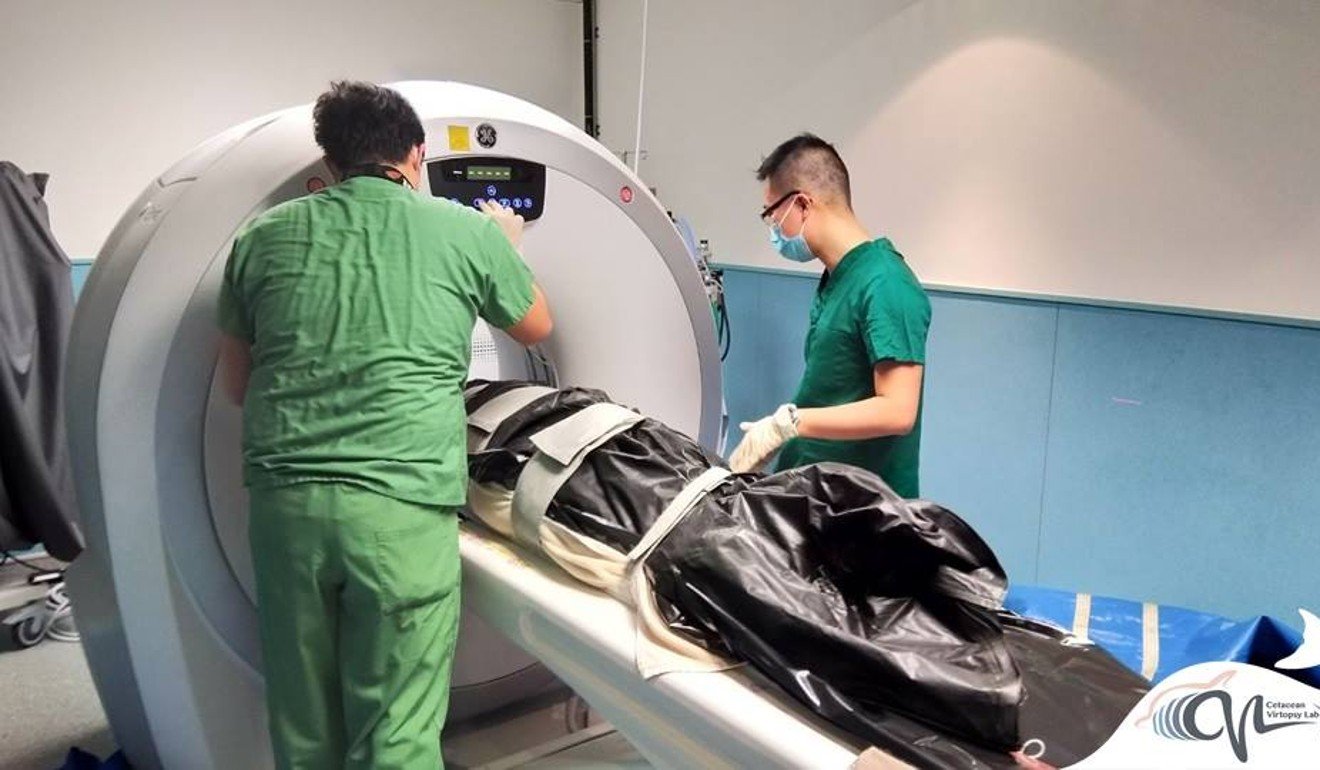
Concerned by the porpoises’ predicament, Audrey first organised a photo exhibition in 2017 where she sold pictures of animals taken while on holiday in San Diego, California. She raised an impressive HK$33,200, impressing the WWF in the process, leading to Audrey collaborating with the NGO in Hong Kong on fundraising projects.
“I knew about the plight of the white dolphins, but my interest deepened about three years ago, when my science studies started investigating real-life situations. That’s when I found out more about the threat to Chinese white dolphins,” she says.

Now, with the support of the WWF, Audrey has launched a crowdfunding appeal to help deploy nine hydrophones – underwater microphones – around Tai O on the western coast of Lantau Island, one of the dolphins’ remaining core habitats, and an area that is not protected. So far she has raised HK$271,815 of her HK$450,000 (US$57,000) goal.
Listen to Chinese white dolphins here
The WWF says the devices are effective (seven have been deployed in the past), recording for two minutes every 10 minutes, for up to six weeks, capturing the high-frequency clicks made by cetaceans, including dolphins, and the very low frequency calls of whales.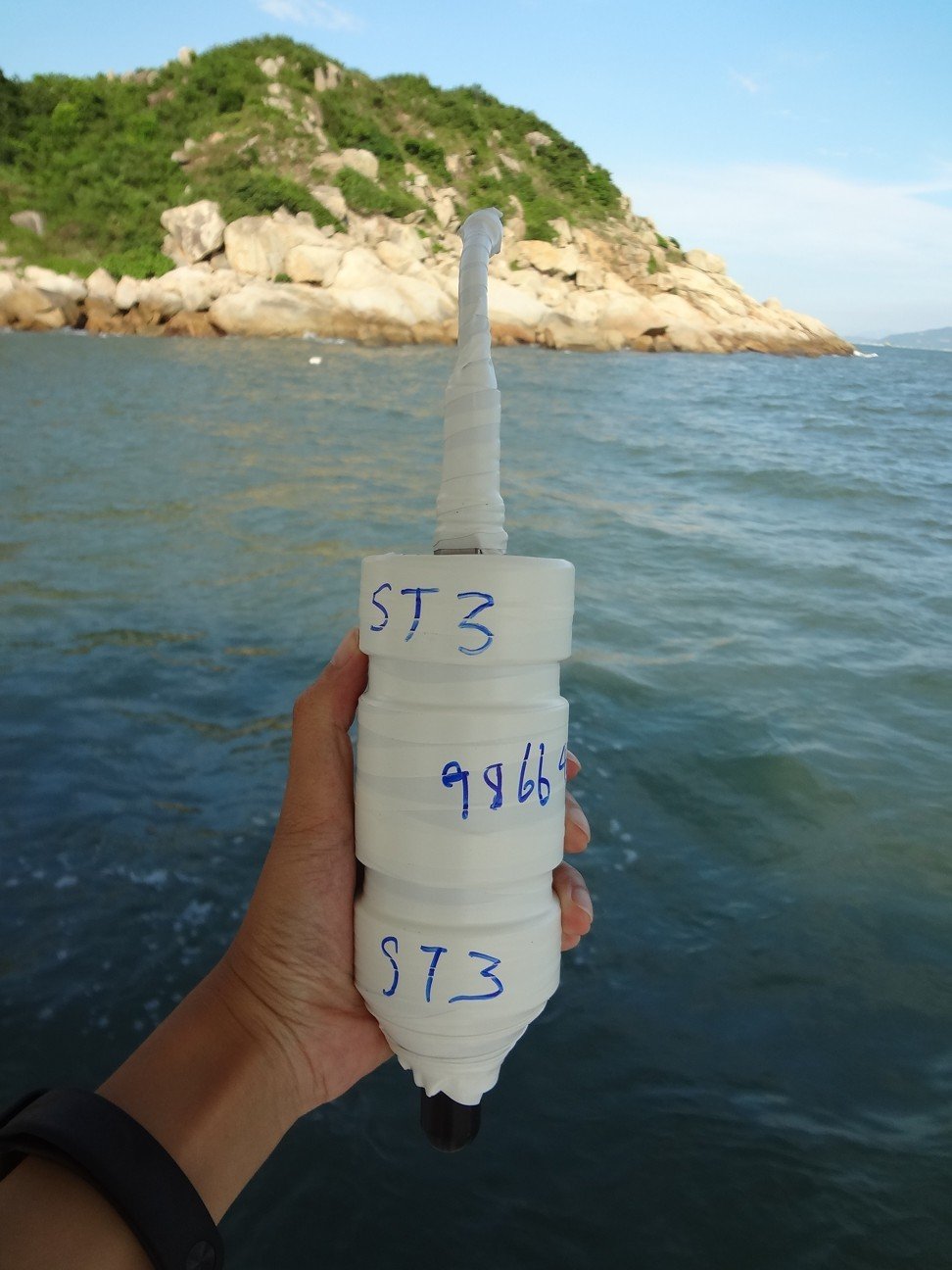
The data collected from the hydrophones shows the amount of time dolphins spend at each location and the number of Chinese white dolphins detected during the day and night.
“The Agriculture, Fisheries and Conservation Department said the number of juveniles and calves in Hong Kong has hit a record low. We hardly see them right now. This is an alarming situation,” says Samantha Lee, senior marine conservation officer with the WWF, referring to the department report that found calf numbers had dipped to their lowest on record, with only 17 sighted over the past year.
‘No optimism’ for survival of Chinese white dolphin in Hong Kong waters
“We have dolphin data but this has mainly been collected during the day. You go out on a boat, record the location of dolphins when we see them come to the surface to breathe. But this method is limiting; we need to find out what they do and where they go during the night.
“We [WWF] engaged an acoustic expert from New Zealand and decided to conduct underwater sound recordings so we can understand dolphins a little bit more,” says Lee.
Lee says sounds from the seven already in place around Lantau waters have collected vital data, including the noises from high-speed vessels, and fishing and cargo vessels, that can be distinguished from the frequency levels.
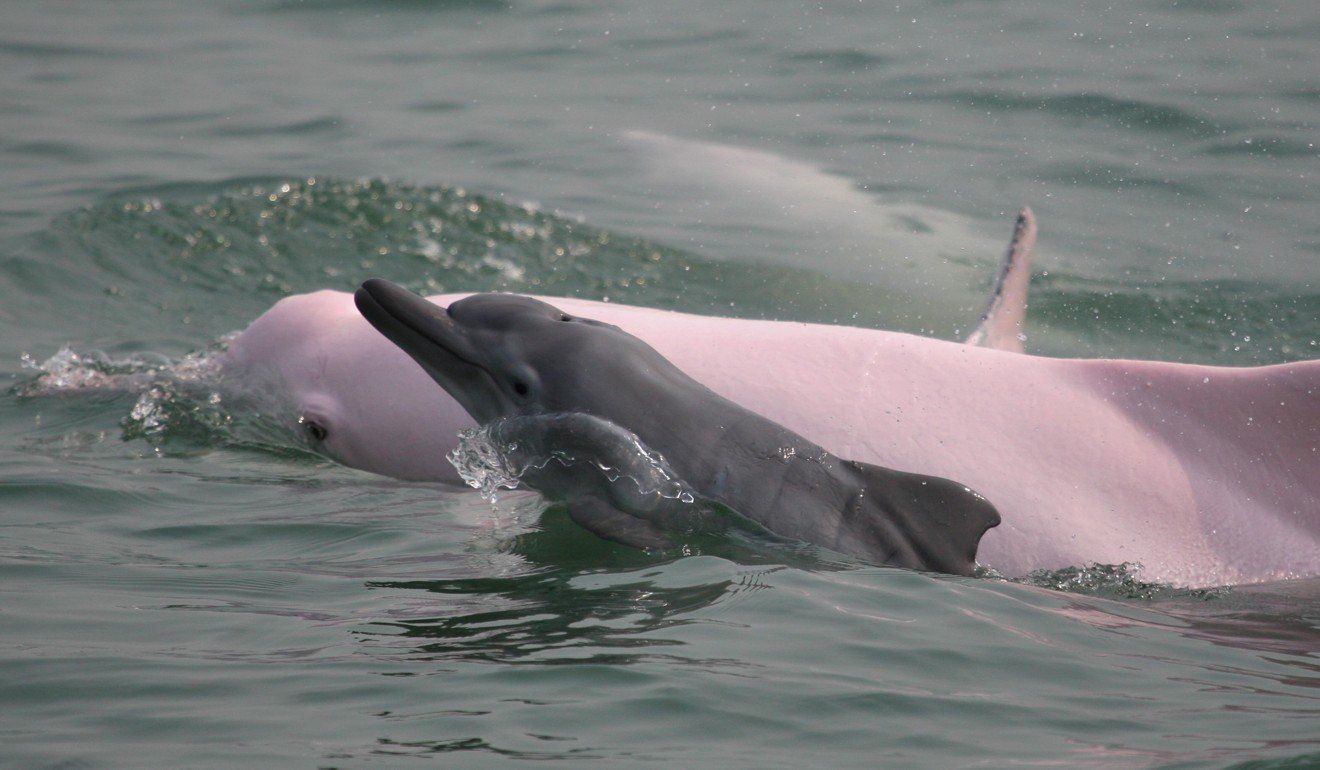
“We found that when a high-speed boat approaches, they are very quiet and they stop foraging, only resuming when the vessel has moved away. This proves that boat activity interrupts foraging. This fundraising project by Audrey will help us buy more hydrophones so we can continue to collect data to submit to the government.”
But it’s an expensive mission, with each device, including the cost of deploying and retrieving them, totalling about HK$50,000. “It’s a lot of money. Don't forget we are an NGO,” says Lee.
Extinction threat faced by pink dolphins in waters around Hong Kong far greater than expected, study finds
As well as lobbying the government to establish protected marine areas, the data collected by the WWF will be included in proposals to divert or restrict vessels traversing key dolphin habitats.
“South of Lantau has many high-speed vessels travelling back and forth so we aim to reduce the frequency of high-speed vessels operating at night.”
Any study on the plight of the dolphin must include the impact from the construction of the Hong Kong–Zhuhai–Macau Bridge, the massive infrastructure project that connects Hong Kong with Macau and Zhuhai, major cities on the Pearl River Delta, that will be opened to traffic in July this year. The 55km link, costing US$15.9 billion, has courted major controversy, not just because of its massive budget, but also the impact it will have on a habitat popular with dolphins.

With most of the Hong Kong-Zhuhai-Macau bridge nearly completed, dolphin numbers should, in theory, have rebounded. Instead, they have fallen.
“Reclamation destroys the dolphins’ foraging habitat and marine traffic increases the collision risk. Also, the underwater noise generated inhibits their echolocation capability,” says Lee, adding these disturbances threaten the survival of the remaining dolphins.
“We once saw a lot of dolphins socialising in that area, but since construction started on the bridge the number has dropped dramatically. Dolphins have abandoned that area and not come back. It’s really sad.”
Airport Authority criticised over relaxing speed limit rules intended to protect Chinese white dolphin
Lee says further developments, such as the HK$400 billion East Lantau Metropolis project set to be completed in the 2040s, created by reclaiming land around two islands east of Lantau and connecting them to Mui Wo in south Lantau, will further threaten the dolphins’ habitat.
“As the government continues to boost land supply for Hong Kong people, it spells disaster for the dolphin population. Reclamation should be the last resort.”
Audrey shares one last message for us all.
“I’ve always been an animal-lover, so I really wanted to do something. Actually we all have a responsibility to make sure all animals live happily and healthily.”
Anyone who spots a stranded cetacean should call the government’s hotline: 1823.

